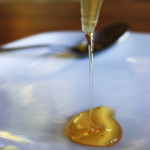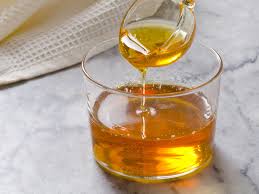
Light your torches, there’s a new witch hunt in the grocery store. The target? Agave syrup. After hitting the mainstream several years ago as the new “healthy sweetener of choice,” agave recently has been under fire with negative backlash all across the health-food spectrum, with many companies even considering pulling agave from their products due to the extent of customer concern.
But is agave really that bad? Can it be compared to high fructose corn syrup? Should we go out of our way to avoid it? Let’s take a look.
What happened with agave?
It really wasn’t all that long ago that many people were just beginning to fall in love with agave – using it often in the place of cane sugar, corn syrup and honey for its intense and clean-tasting sweetness. Agave’s brief history in the North American marketplace has relied upon being marketed as a “raw healthy sweetener.” This sweet syrup extracted from the agave cactus proved especially valuable to the diabetic community, who embraced agave’s low glycemic index. Then, suddenly, agave was everywhere – in recipes, in drinks, in packaged foods, in restaurants, and of course, in desserts. Between a solid stamp of approval from the health food community, and a new excuse to get simply get some sugary goodness on, the mantra of healthy sweet food became “no sugar . . . just agave.”
So when the story broke that agave was actually not healthy at all and was actually comparable to corn syrup, it’s no wonder there was a strong outrage. After all, agave was sold to us as a “healthy sweetener,” and we were paying a premium price tag to enjoy its benefits. Health advocate Dr. Mercola released this adamant and influential article, which was posted and reposted in just about every health-oriented nook and cranny. Suddenly agave was the bad guy, leaving consumers feel betrayed . . . and confused.
Is agave really worse than high fructose corn syrup?
Most of us understand that high fructose corn syrup is something we should avoid entirely. And it’s true that both syrups have very high levels of fructose (the type of sugar that is primarily found in fruit), making the comparison understandable. But high fructose corn syrup is really quite bad – it’s a (mostly) genetically modified, highly processed product that often contains mercury. In comparison, agave is much a less processed product (depending on the source), not to mention free of toxic mercury. Plus, it’s also about twice as sweet as corn syrup – so even though ounce per ounce the fructose levels are the same, you can get away with using significantly less thereby reducing the total sugars.
Unfortunately, using half as much has not been in the game plan for most people. Initially influenced by that “healthy sweetener” tag, liberal use of agave became acceptable and even celebrated — we seemed to forget that at the end of the day, agave syrup is really just a highly concentrated liquid sugar. Clearly, agave was marked misleadingly as “healthy,” but at the same time many companies and individuals failed to use restraint when including it in foods. Sugars – fructose included – are not bad; we just don’t want an excess of them.
If there is one food philosophy that I connect with more than any other it is simply making better choices — which is where agave takes a seat in my kitchen. I find “better choice” agave exceptionally useful in some recipes because it is so efficiently sweet . . . but I avoid using it in large quantities, and try to get away with using as little as possible when formulating recipes. Often, I will use agave in conjunction with another healthier sweetener like stevia to help round out the sweetness, while allowing the other sweetener to do most of the legwork. For healthy culinary purposes, agave ranks amongst the lowest of the sweeteners. But that still doesn’t mean it’s bad — agave just has to be used more consciously then many of us have been accustomed to using it in the past.
Alternative useful sweeteners for a healthy kitchen:
There’s no need to be as obsessively dependent on agave as we’ve become, because let’s face it — there’s a treasure trove of other healthy sweeteners which each bring their own unique benefits to the table. Fresh or dried fruit is always a first option sweetener because it has nutrients and fiber that it brings along for the sweet ride. But fruit simply doesn’t “work” in every recipe, which is why we’re so lucky to have variety. Here’s a short list of some other sweeteners I find particularly useful in making healthy, natural recipes:
- Stevia
- Palm Sugar
- Date Syrup/Sugar
- Yacon Syrup/powder
- Maple Syrup/Sugar
- Jerusalem Artichoke Syrup
The Bottom Line
Agave is not what I would consider to be a “best choice” sweetener – that’s where fruit and stevia step in – but it is unquestionably still a “better choice” in comparison to refined cane sugar and high fructose corn syrup (which make up 99.9% of the sweetener choices that occur every day). As for the best choice in the pursuit of optimum health, perhaps simply maintaining a healthy perspective on the role of sugar in our diets is the most important and beneficial practice of all.
For further reading on why agave isn’t as bad as it seems, I highly recommend this detailed and well researched article: The “Agave Is Bad For You” Fallacy.
The post Is agave syrup good, bad, or just kinda tasty? appeared first on JulieMorris.net.

